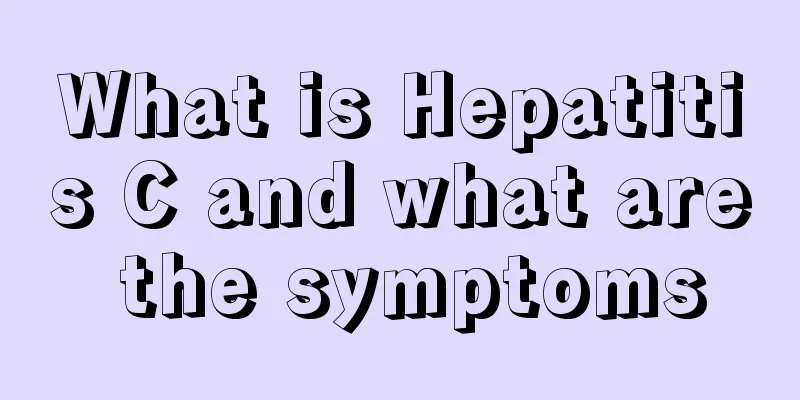Symptoms of small intestinal necrosis

|
In our lives, small intestinal necrosis is a very common disease. Most patients will feel unbearable abdominal pain when they have small intestinal necrosis, because at this time part of our small intestine function has stopped working, so it will affect our normal defecation and gastric motility. Therefore, we must actively treat it at this time, otherwise colic will be very uncomfortable. So what are the symptoms of small intestinal necrosis? Symptoms of intestinal necrosis 1. Abdominal pain The onset is acute, with sudden abdominal pain, which is often the first symptom, mostly around the navel. At the beginning of the disease, it is often manifested by gradually worsening paroxysmal colic around the umbilicus or in the upper and middle abdomen, which then gradually turns into persistent pain in the entire abdomen with paroxysmal worsening. Symptoms of intestinal necrosis 2. Nausea and vomiting It often occurs simultaneously with abdominal pain and diarrhea. The vomitus may be yellow water, coffee-like or bloody, and may also contain bile. Symptoms of intestinal necrosis 3. Diarrhea and blood in the stool Diarrhea may occur after abdominal pain occurs. The stool is initially paste-like and contains feces, then gradually becomes yellow water-like, followed by white water or red bean soup and jam-like, and may even be blood-like or dark red blood clots. The stool is small in size and has a foul odor. No tenesmus. The amount of bleeding varies. In mild cases, there may only be diarrhea, or only positive fecal occult blood without blood in the stool; in severe cases, the amount of bleeding can reach hundreds of milliliters a day. Diarrhea and bloody stools may last as short as 1 to 2 days or as long as more than a month, and may occur intermittently or repeatedly. Severe diarrhea may lead to dehydration and metabolic acidosis. Symptoms of intestinal necrosis 4. Abdominal signs Relatively few. Sometimes there may be abdominal distension and intestinal pattern. There may be obvious tenderness around the umbilicus and upper abdomen. Bowel sounds may be hyperactive in the early stages and then weaken or disappear. Symptoms of intestinal necrosis 5. Systemic symptoms After the onset of the disease, systemic symptoms such as general discomfort, weakness and fever may appear. The fever is generally between 38 and 39°C, and may reach 41 to 42°C in a few cases. However, the fever usually subsides within 4 to 7 days, and it is rare for the fever to last for more than 2 weeks. In newborns, intestinal necrosis symptoms often occur in the distal ileum and proximal ascending colon. In severe cases, the entire gastrointestinal tract may be affected, with the duodenum being less frequently affected. The main changes are inflation of the intestinal cavity, patchy or large-scale necrosis of the mucosa, gas accumulation, bleeding and necrosis of the intestinal wall to varying degrees, and in severe cases, full-thickness necrosis and perforation of the intestinal wall. |
<<: What are the symptoms of liver blood deficiency
>>: Symptoms of gastric bulb ulcer
Recommend
What are the must-have items for a newborn baby?
When a pregnant woman is about to give birth, her...
Why do ladies like rough men
Sex is a wonderful thing, especially for couples ...
What are the causes of colorectal cancer
In recent years, colorectal cancer has become one...
What is the normal 24-hour urine protein content?
The so-called 24-hour urine protein quantificatio...
How to choose soy sauce_
It seems that most people don’t know how to buy s...
What are the five specialties for narcotic drugs
Anesthetic drugs are also commonly used in clinic...
How much do you know about the causes of accelerated heartbeat and panic?
In our daily lives, we often experience rapid hea...
What are the folk remedies for treating runny nose
Symptoms of a hot nose and runny nose only appear...
How to treat advanced prostate cancer? Advanced prostate cancer can be treated in three ways
Prostate cancer is a urinary system disease, and ...
Can women with kidney cancer have children?
It is usually not recommended for female kidney c...
What to do if your head is itchy? It turns out this is the solution
In daily life, there are many reasons that can ca...
I always have insomnia at night and my mind is full of random thoughts
There are many ways to treat insomnia. The most i...
How long can one live with ovarian cancer
Ovarian cancer is a common gynecological malignan...
What should be paid attention to when treating lung cancer? How to treat lung cancer in life?
What should we pay attention to when treating lun...
What are some tips for curing tearful eyes?
In real life, tears are a common condition. Usual...









